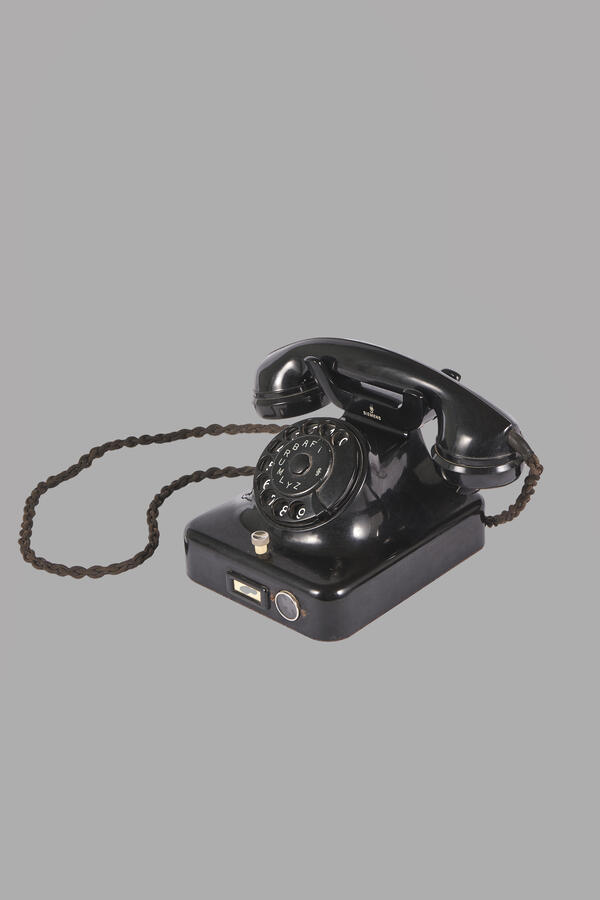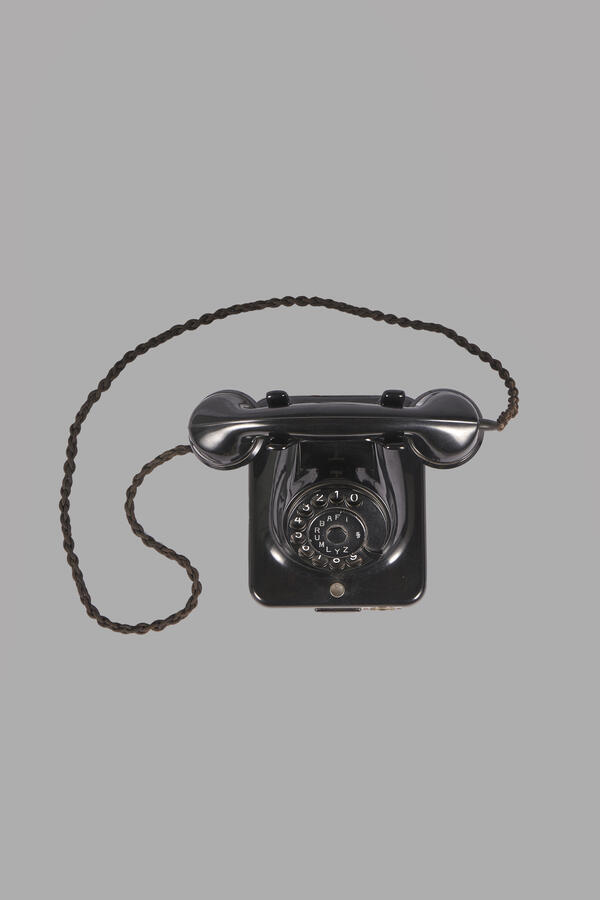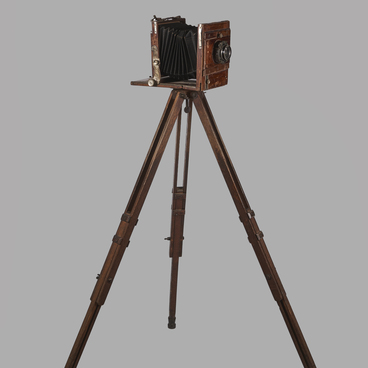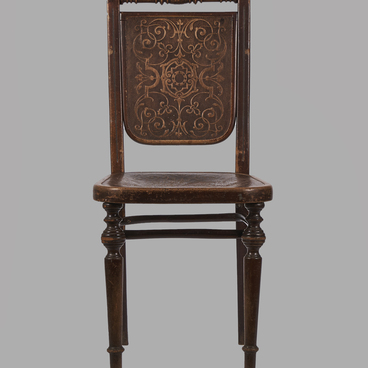Before the introduction of push-button telephones, people used rotary dial telephones.
During the years of Soviet power, the telephone was considered a strategically important method of communication. The number of subscribers was growing, and the first automatic telephone exchanges were built. By 1941, 2,775 pay telephones were installed in Moscow, and any Muscovite could call home, office, or on a business matter. The first telephone numbers consisted of 2–3 digits, but as the number of subscribers grew, the number of digits also increased.
The collection of the Novorossiysk Historical Museum-Reserve contains a Siemens telephone. In 1947, the exhibit was presented to Georgy Afanasyevich Kuznetsov, director of the Novorossiysk Carriage Repair Plant from 1953 to 1971. The telephone set was manufactured by Siemens & Halske in Germany or Austria in 1931.
This desktop rotary telephone was part of the automatic telephone exchange. Its irregular trapezoidal case is made of black Bakelite — phenol-formaldehyde resin. The case is mounted on a metal base resting on four rubber feet. At the top of the phone there is a toggle switch with an embossed manufacturer’s monogram and a white SIEMENS maker’s mark. The receiver is located horizontally on the switch hook. The receiver is connected to the body with a cord made from four parts, each coated with textile. The dial has a rare Austrian notation on the number disc. On the right side of it, the brand of the manufacturer is inlaid in the form of a silver monogram of the letters “S” and “H”. On the rectangular case, there is a window under the film, into which a paper plate with the subscriber’s number was inserted. On the right is another round window with a nickel-plated frame, under glass.
After the Great Patriotic War, the development of telephones in the USSR continued. In 1953, the Moscow City Executive Committee banned the commissioning of new houses without telephone inputs, and since then it became possible to install home telephones in every new building. Although the number of subscriber points was still severely limited.
During the years of Soviet power, the telephone was considered a strategically important method of communication. The number of subscribers was growing, and the first automatic telephone exchanges were built. By 1941, 2,775 pay telephones were installed in Moscow, and any Muscovite could call home, office, or on a business matter. The first telephone numbers consisted of 2–3 digits, but as the number of subscribers grew, the number of digits also increased.
The collection of the Novorossiysk Historical Museum-Reserve contains a Siemens telephone. In 1947, the exhibit was presented to Georgy Afanasyevich Kuznetsov, director of the Novorossiysk Carriage Repair Plant from 1953 to 1971. The telephone set was manufactured by Siemens & Halske in Germany or Austria in 1931.
This desktop rotary telephone was part of the automatic telephone exchange. Its irregular trapezoidal case is made of black Bakelite — phenol-formaldehyde resin. The case is mounted on a metal base resting on four rubber feet. At the top of the phone there is a toggle switch with an embossed manufacturer’s monogram and a white SIEMENS maker’s mark. The receiver is located horizontally on the switch hook. The receiver is connected to the body with a cord made from four parts, each coated with textile. The dial has a rare Austrian notation on the number disc. On the right side of it, the brand of the manufacturer is inlaid in the form of a silver monogram of the letters “S” and “H”. On the rectangular case, there is a window under the film, into which a paper plate with the subscriber’s number was inserted. On the right is another round window with a nickel-plated frame, under glass.
After the Great Patriotic War, the development of telephones in the USSR continued. In 1953, the Moscow City Executive Committee banned the commissioning of new houses without telephone inputs, and since then it became possible to install home telephones in every new building. Although the number of subscriber points was still severely limited.





